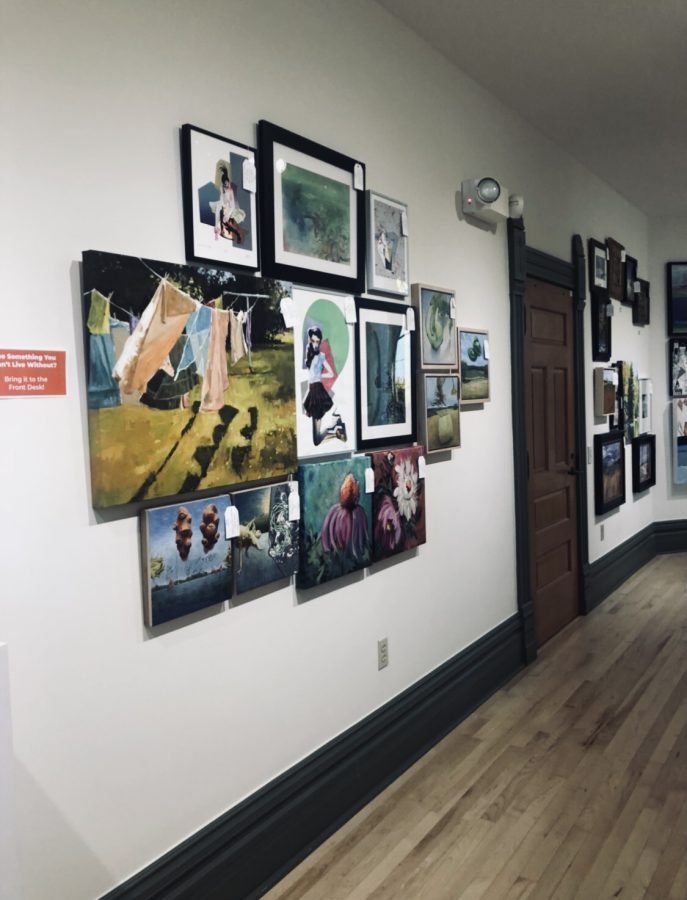This story has a definite beginning but no foreseeable ending
A picture I took at an art gallery in Charlevoix this summer
In the eighth grade, we wrote books.
It was a freedom granted to the Challenge Language Arts students as an opportunity to give our overworked brains a break as we picked at the storytelling instincts we had absorbed and shared pieces of our imagination.
I, being rather on brand, wrote about something sad. I don’t remember details or what specific anecdote I chose to explore, but I remember it being sad—and I remember choosing to balance the overwhelming emotions by making the cover of my novel clipart confetti.
My teacher printed out all of the books and handed us our spiral-bound creations as the year drew to a close. The book was a possession I was proud of and fondly showed it off to my mom and dad after coming home from school.
That was the first time I was ever proud of my writing: eighth-grade, standing in my kitchen with my book about sad thoughts and confetti on the cover.
Now, at an age that’s adjacent to adulthood, I seemingly spend more time writing than I do breathing.
My room is overrun with notebooks half-filled with half-finished poems about abstract nouns and the changing seasons.
I have a pile next to my bed that I don’t have room for anywhere else and an even bigger stack tucked away in my closet. My words incubate in the darkness until I remember about them and start adding the finishing stanzas to the beginnings of poems I no longer love.
My writing has changed a lot over the years. I no longer draw images to accompany my words. Instead, I attempt to use my words to describe my memories and emotions.
And with my writing, I also have grown and matured; however, some things have stayed the same.
My Google Drive is still filled to the brim with a plethora of stories that I have started on nights that my brain is full of words.
And it’s strange looking back upon my progress as a writer.
My sophomore year, when I first decided to take this class, I kept a running list of column ideas out of fear that I’d run out of words to share. Sometimes, my ideas were one-word emotions, and other times, they were a paragraph explaining a dream I had the night before. Now, column topics are something I no longer worry about.
Sophomore year is also when I met Avery and Nat.
Avery and I learned how to write together in the same classroom with the same people. We both have memories of old TCT staff members teaching us the recipe for a good column, and we remember sitting on opposite sides of the room while Mr. George lectured us about the qualities of a good review.
Nat and I had US History together first hour that year, and whether it was foreshadowing or a coincidence, we ended up as editors for the newspaper project that Mrs. Stiles decided to run. We spent a week’s worth of class periods editing other people’s stories as a weird precursor for what we do now.
Now, almost a quarter of the way through our senior year, the three of us reside on a brown couch.
We spend our mornings editing and rubbing sleep from our eyes in a way that seems to parallel first hour history my sophomore year, and we are teaching the intro class how to write like how past editors taught us.
This class is like a family—we pass writing tips down like family heirlooms—and after we’re gone, and the couch supports other tired bodies, I’ll continue to write.
I’ll write text messages to the people that still reside in that room and emails to Mr. George as I update him on my life in a different city. And I’ll continue to write for myself and the emotions I’ll continue to process.
This story has a beginning—a beginning that is covered in clipart confetti—but it has no ending, only a present. And that present is me, surrounded by Avery and Nat, on an old, brown couch, reminiscing about books with confetti clipart on their cover.

Emma is a senior and is starting her third and final year writing for The Central Trend. She spends most of her free time in the passenger seat of a...



























































































